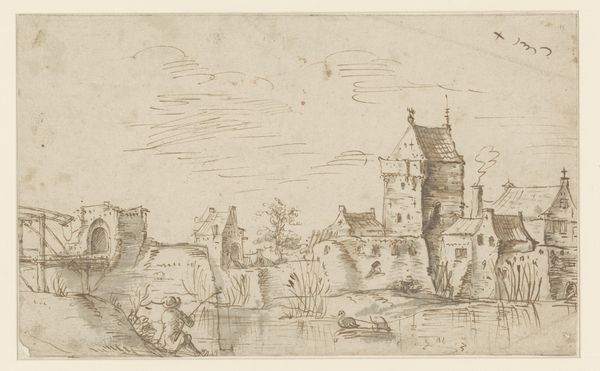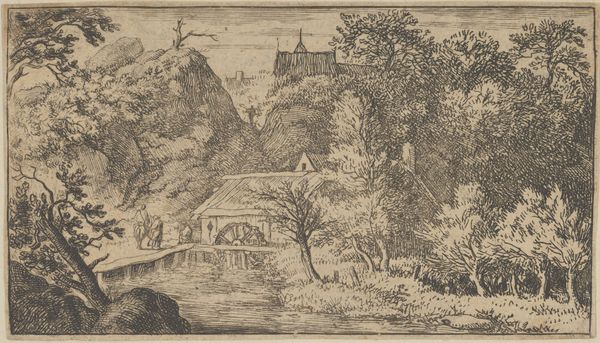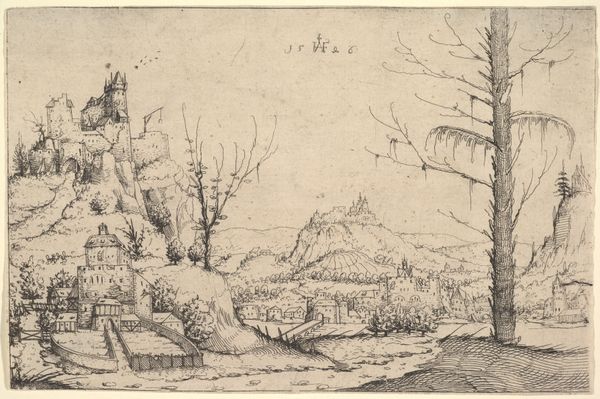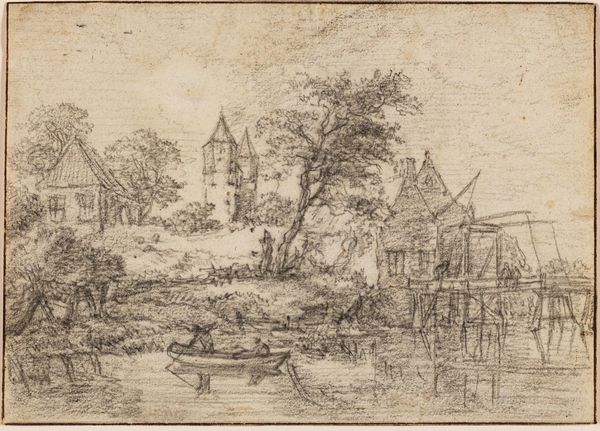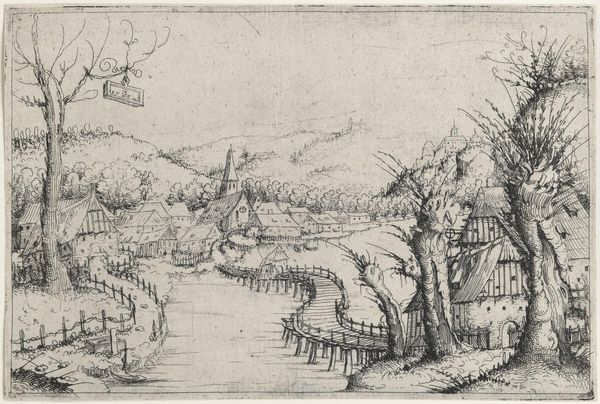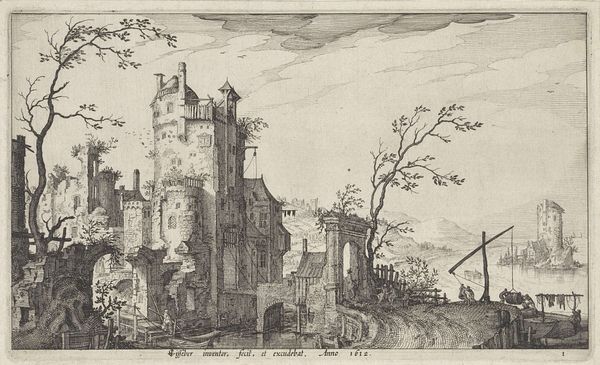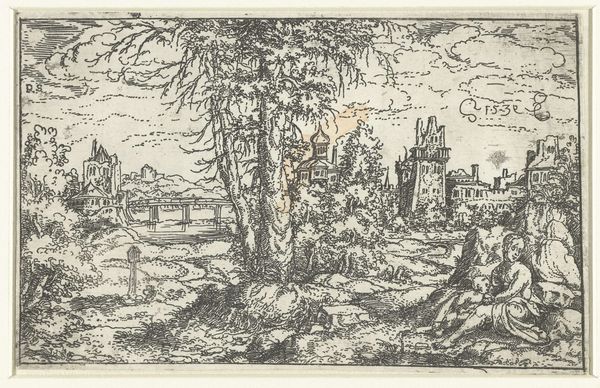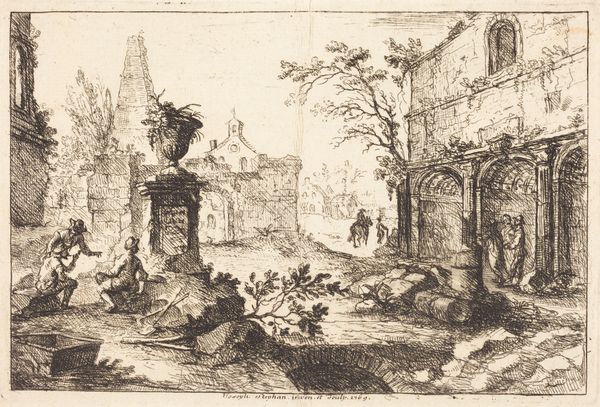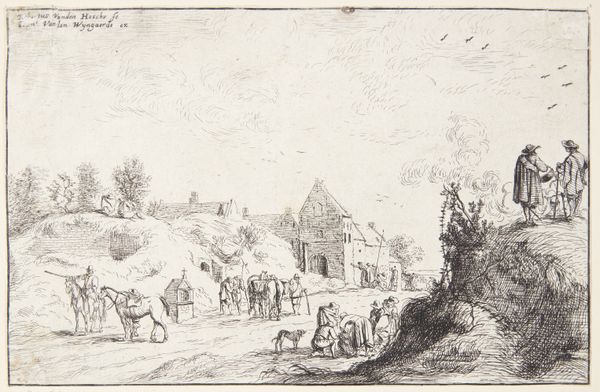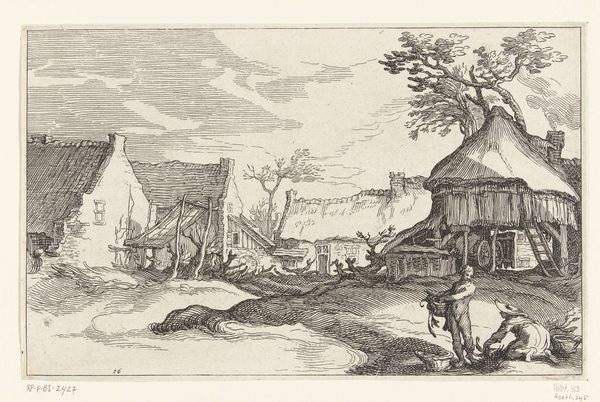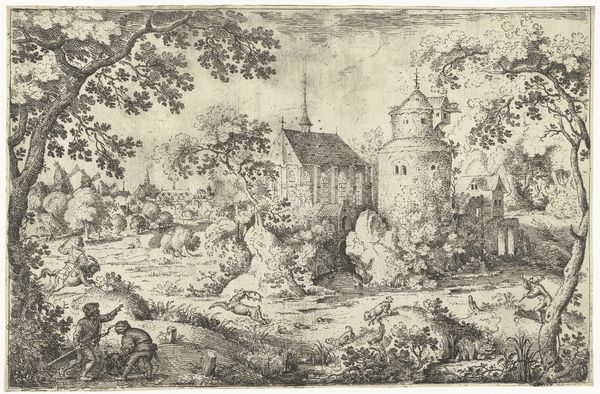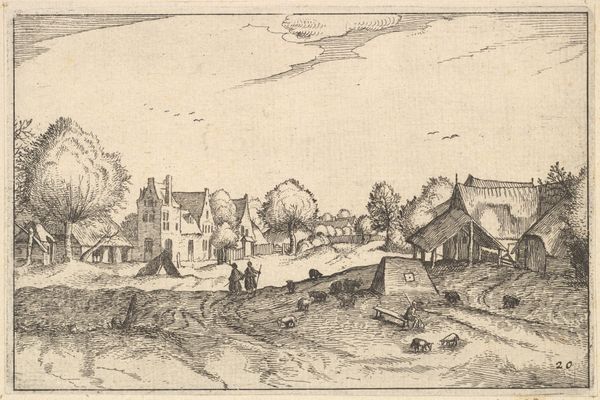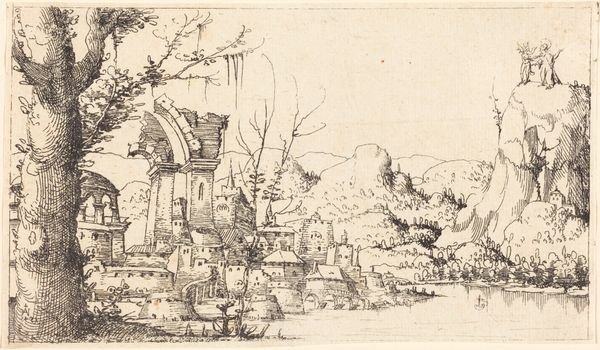
drawing, print, ink, woodcut
#
drawing
#
medieval
# print
#
landscape
#
ink
#
woodcut
#
cityscape
#
northern-renaissance
Copyright: National Gallery of Art: CC0 1.0
Editor: Here we have Augustin Hirschvogel's "Courtyard of a Castle," a woodcut and ink drawing from 1546. It feels very meticulous and a little melancholic, this detailed scene rendered in fine lines. What catches your eye in this piece? Curator: The scene is rich in cultural memory. Consider the bare tree set against the solidity of the castle walls – what could this contrast symbolize? It appears almost as a skeletal frame, echoing perhaps themes of mortality or the passage of time within a seemingly eternal structure. Think about how often the tree has served as a cultural metaphor across Europe. Editor: That's interesting; I hadn't considered the symbolic weight of the tree. I was just thinking about the composition, framing the scene. Curator: Framing is indeed crucial. Notice also the strategic placement of architectural details—the imposing gate, the high walls, the guard tower. They don't just depict space but control the viewer's perception of it. These are elements of power, visual assertions of control typical of such spaces in the Northern Renaissance. Are you noticing any particular elements or symbols repeating themselves in this print? Editor: I do see that the vertical lines, from the buildings, ladders, and even the bare tree, seem to dominate the composition. It’s not the cozy, idealized nature scene I was expecting. Curator: Precisely. The verticality speaks to ambition and defense, which are often intertwined, whereas, say, an Italian landscape of the same era may be concerned with the harmonious balance of nature. Think about the historical anxieties present in 16th-century Europe. Landscapes weren’t simply pretty; they were stages for human drama. Editor: I see, the landscape is communicating a sense of the era, reflecting more than just what things looked like. Curator: Yes! And Hirschvogel has captured something enduring, hasn't he? It is not only about buildings and trees, but the symbolic landscape of the self within historical time.
Comments
No comments
Be the first to comment and join the conversation on the ultimate creative platform.
